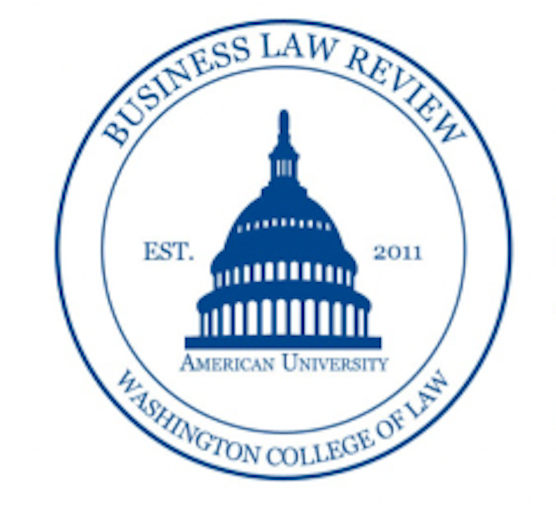By: Sara Sass
Woodbridge, one of the largest grocer retailers in the United States, contributed with various contribution rates to a multiemployer pension plan (“MPP”) for their trucking and warehouse employees. MPPs involve multiple employers creating pensions for their employees, and these pensions require contribution rates annually set by each employer.[2] Woodbridge withdrew from the plan in 2011, the same year this grocer retailer attained largest grocery distributor by revenue in the United States.[3] The Local Pension Fund (“Fund”) of the trucking and warehouse employees asserted the highest contribution rate Woodbridge ever deposited to the plan for the employees’ pensions is owed. The Third Circuit ruled in favor of the Fund.
The withdrawal of Woodbridge from its MPP is regulated by the Multiemployer Pension Plan Amendments Act of 1980 (“MPPAA”). Within the MPPAA, the Employee Retirement Income Security Act of 1974 (“ERISA”) states “ And before Woodbridge withdrew from the plan, a ten percent surcharge on their annual payment was paid. The Fund also asserts that this surcharge is owed to them.
Annual payments must be based on the “the highest contribution rate”[8] at which the employer had an obligation to contribute under the MPP, according to one of the provisions added to ERISA by the MPPAA.[9] While the Fund sought the highest contribute rate from Woodbridge, Woodbridge contended that their contributions were pooled in a general fund which could be used to satisfy any of the Fund’s legal obligations. Thus, Woodbridge argued, the contribution rates should not be based on the highest paid to the Fund, but be averaged for the receiving pensioners. Woodbridge also asserted that MPPs involve risk sharing between multiple employers, and this benefits employees by enabling continued employment without losing credit for individual pension funds.[10]
The Third Circuit ruled that employers should pay the single highest contribution rate after withdrawing from MPPs. MPPs enable employer withdrawal from weak pension plans, reducing the plan’s contribution base. [11] Employer withdrawal shifts the financial burden to involved pensioners, who are left with higher contribution costs and little benefit.[12] Withdrawal endangers the entire MPP because other involved employers have incentive to also leave.[13] By enacting ERISA in 1980, Congress intended to protect pensioners by guaranteeing their receipt of promised pensions.[14] Thus, Woodbridge’s penalization from fund withdrawal is grounded in ERISA statute and Congressional intent. Relying on statute, the “court concluded that Section 1399(c)(1)(C)(i)(II) is plain and unambiguous in referring to a single contribution rate: the highest contribution rate at which the employer had an obligation to contribute under the plan.” While this may seem unfair to the employer, the MPPAA[17] caps annual pension fund payments at twenty years even if more than twenty annual payments would be required to completely satisfy Woodbridge’s withdrawal liability.[18] Thus statutory protection in MPPs also exists for the employer.
This decision may impact employers’ decisions for keeping pension plans entirely. MPPs, now requiring the highest contribution rate given by the employer for payout in the Third Circuit, may be less desirable to the employer. Currently ten million Americans rely on MPPs.[22] Relying on other employers in the plan to maintain levels of contribution can be risky and uncertain, and the MPP does not give employees a large amount of control over their own money. Alternative pension plans growing in popularity include the 401(k), which fifty-two million Americans take part in.[23] The employee does not have to contribute as much of their retirement with a 401(k), compared to pension contributions. Unlike the MPP, multiple employers are not competing and withdrawing at various times with the 401(k). Alternatively, over ninety million Americans[25] have departed from their employer’s pension plans to rely on themselves with Individual Retirement Accounts[26] (“IRAs”). IRAs are kept separate from the employer and give the contributor account control although there is a contribution limit with different financial institutions.[27] So the MPP, under employer control, does not give the employee the kind of power an IRA does. Thus, both judicially and socially, evidenced by the number of Americans who think depending on their employer for pensions is not as enticing as relying on themselves, we are moving away from multiemployer pension plans.
[1] Board of Trustees of the IBT Local Pension Fund v. C&S Wholesale Grocers, Inc., Woodbridge Logistics LLC, No. 14-1956, 2015 WL 5438539 (3d Cir. Sept. 16, 2015).
[2] Id.
[3] Id. at 2.
[4] Id. at 3.
[5] See 29 U.S.C. §§ 1381-1461.
[6] Id.
[7] Bd. of Trs. of the IBT Local Pension Fund v. C&S Wholesale Grocers, Inc., Woodbridge Logistics LLC, at 3.
[8] Id. at 3.
[9] Id. at 3.
[10] Id.
[11] Id
[12] Id. at 4.
[13] Id. at 4.
[14] Id. at 4.
[15] Id
[16] Id. at 11.
[17] See Section 1399(c)(1)(C)(i).
[18] Id. at 15.
[19] Id.
[20] Id. at 16.
[21] See 29 U.S.C. § 1085(e)(9)(B).
[22] Pension Rights Center, Facts About Multiemployer Pension Plan Funding, https://www.pensionrights.org/publications/fact-sheet/facts-about-multiemployer-pension-plan-funding (last visited Oct. 22, 2015).
[23] Investment Company Institute, Frequently Asked Questions about 401(k) Plans, https://www.ici.org/policy/retirement/plan/401k/faqs_401k (last visited Oct. 22, 2015).
[24] Id.
[25] CBS Detroit, Study: Only 15% of Americans Make Annual IRA Contributions, https://detroit.cbslocal.com/2012/03/07/study-only-15-of-americans-make-annual-ira-contributions/ (last visited Oct. 22, 2015).
[26] Bureau of Labor Statistics, Employment Status of the Civilian population by Sex and Age, https://www.bls.gov/news.release/empsit.t01.htm (last visited Oct. 22, 2015).
[27] 20 Something Finance, Why You Should Care that Pensions Are Going Extinct, https://20somethingfinance.com/pensions-vs-401ks-why-you-should-care-that-pensions-are-going-extinct/ (last visited Oct. 22, 2015).


